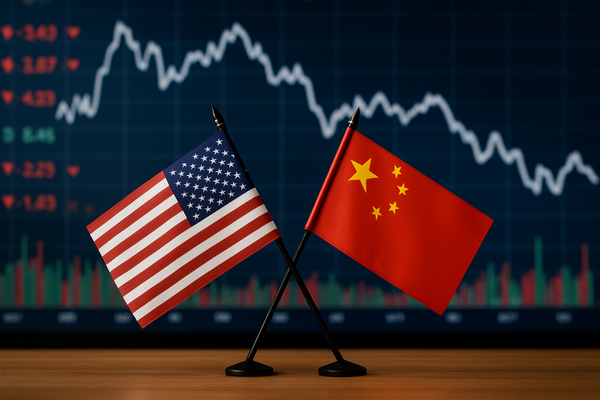
Trump-Xi truce reshapes trade outlook and tests market confidence. Their face-to-face meeting in Busan produced concrete pledges that matter now because they lower near-term escalation risk and affect flows of soybeans and rare earth minerals. Short-term markets respond to tariff relief talk and vague purchase promises. Long-term outcomes remain uncertain because core disputes are unresolved. The deal alters sentiment in the US, Europe and Asia while emerging markets watch export and commodity demand.
What happened and why it matters
Face-to-face talks, pledges and a fragile de-escalation
The leaders met on the sidelines of the APEC summit in Busan and reached what Reuters described as a fragile truce. China pledged to expand farm trade and allow more rare earth mineral flows. The United States sought commitments to crack down on opioid-related chemicals and secure purchases of soybeans. In return, Trump indicated the possibility of tariff relief. The interaction was notable because it was the first in-person meeting between the two presidents since 2019.
These moves matter now because markets priced in both the risk of continued tit-for-tat measures and the hope of stabilizing trade between the two largest economies. Traders had expected clearer signals on volumes and timing. Instead they received firm language but few specifics, leaving room for market volatility and headline-driven moves. Historically, previous US-China understandings have produced temporary relief followed by renewed friction when underlying structural issues were not settled.
Market implications in the near term
Tariff sentiment, commodity flows and investor positioning
Investors reacted to the truce by reassessing the trade risk premium. Talk of tariff relief tends to reduce pressure on sectors most exposed to trade barriers. Agricultural commodity markets watched China’s promise to buy soybeans. Importantly, the statement did not include specific volumes or timelines, which disappointed participants who had hoped for a quick return to the large-scale purchases seen in earlier cycles.
Rare earth minerals were highlighted as a strategic topic. Any loosening of export restrictions could affect input costs for technology and defense supply chains. Markets that track mining and materials prices pay close attention to such signals, even when announcements lack detail. At the same time, the US domestic political picture introduced domestic risk. A prolonged government shutdown raised questions about enforcement, fiscal policy continuity and investor confidence.
Overall, the truce lowers the chance of immediate escalation. However, without concrete mechanisms or verification, the effect will likely be uneven across asset classes. Equities sensitive to trade exposure may rally on calmer headlines, while currency and commodity markets may show muted moves until purchase schedules and tariff steps are clear.
Regional dynamics and diplomatic signals
Pageantry, gifts and a different tone in Asia
The five-day Asia tour included high-profile ceremonial gestures from Japan, South Korea and Malaysia. These displays reinforced diplomatic goodwill and offered short-term political wins for the US. Japan presented 250 cherry blossom trees and a golf club once used by Shinzo Abe. South Korea offered a replica gold crown and military fanfare underscored public theater rather than policy detail. Those gestures matter for regional relations because they signal continued US engagement in Asia despite domestic headwinds.
China’s approach was more restrained. Xi delivered prepared remarks and avoided ostentatious praise. That contrast reflected different domestic priorities. Beijing promised to expand farm trade, but the lack of immediate specifics meant markets and exporters would wait for confirmation. Other regional players will factor this truce into their calculations on trade diversification and supply chain strategies. For emerging markets that rely on commodity exports to China, the difference between a pledge and an executed purchase can change short-term export earnings and currency flows.
Policy calendar and risks to watch
Key dates, legal tests and political continuity
Timing increases the relevance of the Busan meeting. Early November contains several potential market-moving events. The US government shutdown could reach a record length on November 4 and 5 if unresolved, complicating fiscal clarity and affecting market sentiment. The US Supreme Court will hear arguments on the legality of sweeping global tariffs, a case that could define executive trade authority and influence long-term tariff strategy.
Investors should monitor whether China follows through with tangible purchases and whether tariff relief appears in any formal announcements. Markets will also watch subsequent diplomacy, including follow-up meetings and detailed agreements. If verification steps are set, market confidence is more likely to strengthen. If follow-up is absent, the initial truce risks being a short-lived reprieve that leaves underlying economic competition intact.
How this affects market narratives
Sentiment correction without structural resolution
The truce offered a reset in sentiment by lowering headline risk. In the short term, that can ease volatility and support risk assets that had been penalized by trade uncertainty. Bond markets and currencies will price the interplay between reduced near-term geopolitical headline risk and persistent domestic political uncertainty in the United States.
Longer term, the core strategic issues that drove the trade war remain. Intellectual property, technology controls and industrial policy were not resolved in Busan. Markets should therefore treat the outcome as a tactical de-escalation rather than a durable settlement. The distinction matters for portfolio allocations and for companies planning supply chain investments or capital expenditures that depend on trade predictability.
The Busan meeting changed the tone in the short term. It did not erase the deeper disagreements that affect trade policy and strategic competition. Market participants will look for follow-up actions, concrete procurement schedules and legal clarifications to assess how durable the de-escalation will be.












